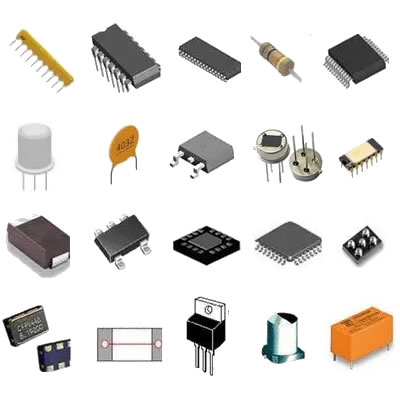What is the market prospect of capacitor banks?
What is the Market Prospect of Capacitor Banks?
I. Introduction
Capacitor banks are essential components in electrical systems, designed to improve power quality and enhance the efficiency of electrical networks. By storing and releasing electrical energy, they play a crucial role in reactive power compensation, voltage stabilization, and harmonic filtering. As the global demand for electricity continues to rise, the market for capacitor banks is poised for significant growth. This blog post will explore the market prospects of capacitor banks, examining their functionality, market drivers, challenges, regional dynamics, and future trends.
II. Understanding Capacitor Banks
A. Functionality and Operation
Capacitor banks serve several critical functions in electrical systems:
1. **Reactive Power Compensation**: Capacitor banks provide reactive power, which is essential for maintaining voltage levels in power systems. By compensating for inductive loads, they help reduce losses and improve the overall efficiency of the electrical network.
2. **Voltage Stabilization**: By supplying reactive power, capacitor banks help stabilize voltage levels, ensuring that electrical equipment operates within specified limits. This is particularly important in industrial settings where voltage fluctuations can lead to equipment damage and operational inefficiencies.
3. **Harmonic Filtering**: Capacitor banks can also mitigate harmonics in electrical systems, which are caused by non-linear loads. By filtering out these harmonics, capacitor banks improve power quality and reduce the risk of overheating and equipment failure.
B. Types of Capacitor Banks
There are several types of capacitor banks, each designed for specific applications:
1. **Fixed Capacitor Banks**: These are permanently installed and provide a constant level of reactive power. They are commonly used in industrial applications where the load is predictable.
2. **Automatic Capacitor Banks**: These systems can adjust their output based on real-time demand, making them ideal for dynamic environments where load conditions fluctuate frequently.
3. **Synchronous Capacitor Banks**: These devices can provide both reactive power and voltage support, making them suitable for applications requiring precise voltage control.
III. Market Drivers
A. Growing Demand for Electricity
The global demand for electricity is on the rise, driven by factors such as urbanization, industrialization, and population growth. As countries develop and expand their infrastructure, the need for reliable and efficient power systems becomes increasingly critical. Capacitor banks play a vital role in meeting this demand by enhancing the performance of electrical networks.
B. Renewable Energy Integration
The transition to renewable energy sources, such as wind and solar, presents both opportunities and challenges for power systems. Capacitor banks are essential for integrating these intermittent energy sources into the grid, providing the necessary reactive power to maintain stability and reliability. As more countries commit to renewable energy targets, the demand for capacitor banks is expected to grow.
C. Technological Advancements
Advancements in technology, particularly in smart grid solutions, are driving the evolution of capacitor bank designs. Modern capacitor banks are equipped with advanced monitoring and control systems, allowing for real-time adjustments and improved efficiency. This technological progress enhances the appeal of capacitor banks in the market.
IV. Market Challenges
A. Competition from Alternative Technologies
While capacitor banks are essential for power quality management, they face competition from alternative technologies, such as energy storage systems and other power quality solutions. As these alternatives become more cost-effective and widely adopted, capacitor banks may need to adapt to maintain their market position.
B. Regulatory and Environmental Concerns
The capacitor bank market is subject to various regulatory and environmental standards. Compliance with these regulations can pose challenges for manufacturers and operators, particularly in terms of environmental impact assessments and adherence to safety standards.
C. Economic Factors
Fluctuating raw material prices and investment costs can impact the capacitor bank market. Manufacturers must navigate these economic factors to ensure competitive pricing and return on investment (ROI) for their products.
V. Regional Market Analysis
A. North America
The North American capacitor bank market is characterized by a strong focus on technological innovation and infrastructure development. Key players in the region are investing in research and development to enhance capacitor bank designs and improve efficiency. The market is expected to grow as utilities and industries seek to modernize their electrical systems.
B. Europe
Europe's regulatory landscape is conducive to the growth of capacitor banks, with various incentives promoting the adoption of renewable energy sources. As countries in the region strive to meet ambitious climate goals, the demand for capacitor banks to support grid stability and reliability is likely to increase.
C. Asia-Pacific
The Asia-Pacific region is experiencing rapid industrialization and urban growth, leading to a surge in electricity demand. Emerging markets in this region present significant investment opportunities for capacitor bank manufacturers. As countries expand their power infrastructure, the need for capacitor banks will become increasingly pronounced.
D. Latin America and Middle East & Africa
In Latin America and the Middle East & Africa, the capacitor bank market is still developing. However, infrastructure development initiatives and increasing investments in renewable energy projects are expected to drive market growth in these regions. Challenges such as economic instability and regulatory hurdles may impact the pace of growth.
VI. Future Trends and Opportunities
A. Increasing Focus on Energy Efficiency
As energy efficiency becomes a priority for governments and industries worldwide, capacitor banks will play a crucial role in optimizing power systems. The demand for energy-efficient solutions will drive innovation in capacitor bank technology.
B. Integration of IoT and AI in Capacitor Bank Management
The integration of Internet of Things (IoT) and artificial intelligence (AI) technologies in capacitor bank management systems will enhance monitoring, control, and predictive maintenance capabilities. This trend will improve the overall performance and reliability of capacitor banks.
C. Expansion of Electric Vehicle Infrastructure
The growing adoption of electric vehicles (EVs) presents new opportunities for capacitor banks. As EV charging infrastructure expands, capacitor banks can help manage the increased demand for reactive power and stabilize the grid.
D. Potential for Hybrid Systems
The future may see the development of hybrid systems that combine capacitor banks with other technologies, such as energy storage systems and advanced power electronics. These hybrid solutions could offer enhanced performance and flexibility in managing power quality.
VII. Conclusion
The market prospects for capacitor banks are promising, driven by the growing demand for electricity, the integration of renewable energy sources, and technological advancements. While challenges exist, such as competition from alternative technologies and regulatory concerns, the overall outlook remains positive. Capacitor banks will continue to play a vital role in future energy systems, ensuring stability, efficiency, and reliability. Stakeholders in the industry should recognize the importance of capacitor banks and explore opportunities for innovation and growth in this evolving market.
VIII. References
- Academic journals on electrical engineering and power systems
- Industry reports from market research firms
- Publications on energy efficiency and renewable energy integration
---
This blog post provides a comprehensive overview of the market prospects of capacitor banks, highlighting their significance in modern electrical systems and the factors influencing their growth. By understanding the dynamics of this market, stakeholders can make informed decisions and capitalize on emerging opportunities.







